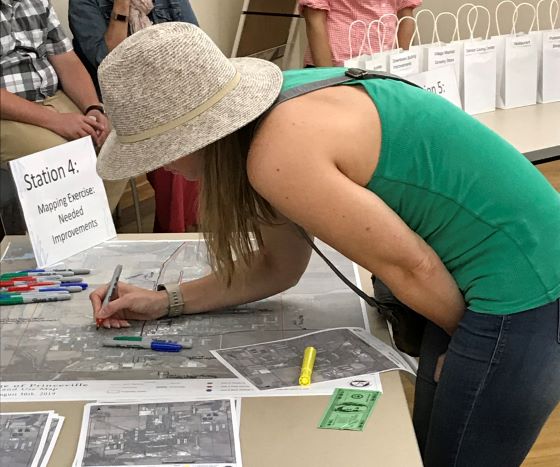
Comprehensive Planning
Communities in Illinois are authorized to establish planning commissions and develop comprehensive plans under the provisions of the Illinois Municipal Code (65 ILCS 5). Comprehensive planning is a critical tool used to best respond to the changes and evolution of a community to meet the needs of current and future residents.
Regional Comprehensive Plan Map
What is a Comprehensive Plan?
A comprehensive plan is a document created by a local unit of government. The planning process involves working with the entire community to come together and develop a shared vision and strategic plans to achieve the vision with goals, objectives, and implementation strategies. The end product gives a snapshot of a community and acts as a blueprint for local officials and civic leaders to follow to bring about the shared vision, while expanding the high quality of life for their residents.
What does a comprehensive plan examine?
The comprehensive plan answers the question, “How can our community become an even better place to live, work, and visit?” An effective comprehensive plan consists of three parts:
Inventory of Existing Conditions
The inventory of existing conditions answers the question, “Where are we now?” It includes analysis of data and identification of trends to arrive at projections pertaining to land use, population, housing, economic development, transportation, community infrastructure, natural resources, and other components. The strengths and weaknesses of a community also are identified during this step.
Vision Statement
The vision statement answers the question, “What do we want to be in the future?” It is based on existing conditions, strengths and weaknesses, and community input. The vision presents a picture of what the community desires to be.
Action Plan
The action plan answers the question, “How do we get there?” It consists of goals devised for the community and objectives that, when completed, achieve the goals. The action plan also includes a future land use map, which identifies the areas of a community best suited for residential, commercial, open space, and other uses.
How can the public participate?
A steering committee comprised of local government personnel, stakeholders, and citizens facilitates the planning process. By holding public open houses and comment periods, the committee ensures that the community has ample opportunities to participate and provide input. Public participation is imperative to identify how a community can become an even better place to live, work, and play.
Steps for completing the planning process:
- Meet with local leaders and stakeholders
- Review past plans
- Structure and schedule the planning process
- Gather and analyze data
- Identify problems, issues, and concerns (Public Open House)
- Prioritize problems, issues, and concerns
- Develop a "Vision" for the plan
- Develop goals, objectives, and action plans
- Adopt the plan
- Monitor the results and impacts
Want more information?
Debbi La Rue
Ongoing Plans
Click one of the buttons below to view the dedicated pages for the respective comprehensive plans.